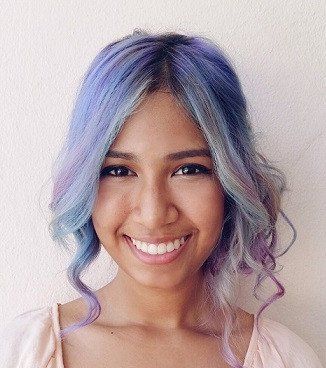3 Lessons from 13 Reasons Why

Photo credit: Anoncraft.com
Netflix has been accused of sensationalising and glamorising suicide in the Netflix hit series 13 Reasons Why.
The 13-episode series depicts the experiences of a 17-year-old high school girl, Hannah Baker, who leaves a series of cassette tapes explaining the reasons that led to her taking her own life.
Two perspectives surfaced from this show. Some viewers say it downplays the harsh pain of suicide and mental illness while others say it’s a good wake-up call to the reality and effects of bullying, sexual assault, suicide and violence.
Suicide is more than a choice; it’s the result of a situational built-up
The suicidal rate in Malaysia is worryingly increasing. A survey conducted by the Malaysian Mental Health Association (MMHA) shows that almost one-third of adults suffer from mental health problems.
The World Health Organisation states that in the last 45 years, suicide rates have increased by 60% worldwide. In fact, suicide is the second leading cause of death among people between 15–29 age groups. Attempted suicides are up to 20 times more frequent than completed suicides.
While there was much controversy surrounding the Netflix series, the intention of this captivating series was to create open discussions towards taboo subjects such as those portrayed in the episodes.
Its executive producer, Brian Yorkey says:
“Adults tend to trivialise what for teenagers and adults is not trivial. Teenage brains don’t work the way adult brains work. Trauma and pain feel like they’re going to last forever. And I think we forget that sometimes.”
Hannah’s ‘tape’ in every episode is heart-wrenching and will have you sitting on the edge of your seat as you watch life through Hannah’s eyes. Every tape is recorded by her and dedicated to each person to explain how their actions impacted her psyche.
It starts off with cyberbullying in school and then – like a domino effect, builds on to rejection, loneliness, depression, and rape – all of which leads her to eventually take her life.
While the intention of the show was to shine the spotlight on heavy topics that are very much present today, especially in schools, the message may trigger those who are more vulnerable.
“… I think that attitude actually is unfortunate because not any conversation is better than no conversation. It has to be an appropriate conversation, because an inappropriate conversation can actually do some harm,” states Madelyn Gould, PhD, MPH, professor of epidemiology in psychiatry at Columbia University.
“Someone can watch Hannah and go, ‘yeah that’s me; in fact I’m even worse than that and she can do this. This is real, I can do it too.’”
While raising the awareness that these problems exist is crucial, it is even more important for meaningful discussions to take place after watching the shows. Or, seeking help from qualified professionals if needed.
“We wanted to do in a way where it was honest and we wanted to make something that can hopefully help people because suicide should never ever be an option,” co-producer Selena Gomez explains.
See also: Putting Ourselves In Other People’s Shoes
3 key takeaways from the show
1. Don’t believe everything people say.
Hannah Baker was shamed and called a ‘slut’ which created a spiral effect for the rest of her high school years. The effects could compare to the peeling a scab every time it almost heals. It’s not just in school that rumours can spread like wildfire – damaging the intended subject.
Head out into the corporate world, and we still hear anecdotes about backstabbers and naysayers sucking up to bosses and pulling others down. Not everything people say rings true.
Always weigh the validity of things said. Even if they are true statements, the last thing one should do is avoid the ‘infected’ or ‘damaged’ person.
2. Covering up problems doesn’t make them go away.
Hannah’s tapes consist of people whom she was ‘friends’ with; and at some point, had ‘damaged’ her life in some way. All of them hear the tapes, and some try to deny Hannah’s truth about what happened – by insisting that such incidents never occurred. One of these incidents includes a high school jock who rapes one of their school mates and gets away with it.
They hoped that by covering up the truth, their future will be safe. But it only gets more complicated as the guilt and issues build up along with Hannah’s parents filing a lawsuit against the school for negligence as they failed to intervene in their daughter’s bullying, or notify them.
This might interest you: 9 Ways To Stop A Workplace Bully
3. Downplaying someone’s issues is dangerous.
As Hannah goes through each incident, her issues seem to be misunderstood and unobvious to those around her. In the moments where she attempts to come out to share them (although not fully), her issues are belittled and the root problem went unheard and undealt with.
“Constantly belittling, threatening or ignoring children can be as damaging to their mental health as physical or sexual abuse.” (Goodwin, 2012, Online)
The graver issue with belittling is that it leaves no visible or recognisable scars.
“But, with no bruises to spot, paediatricians, teachers, and family members may have trouble recognising these and other forms of psychological abuse.”
In summary
“The whole topic of suicide is an uncomfortable thing to talk about but it happens, so we have to talk about it. And it’s dangerous not to talk about it because there’s always room for hope,” said Jay Asher, author of 13 Reasons Why.
To seek help, please don’t hesitate to contact Befrienders KL or MMHA. To send your feedback to the writer, please email us at editor@leaderonomics.com. For more Hard Talk articles, click here.
Leadership





